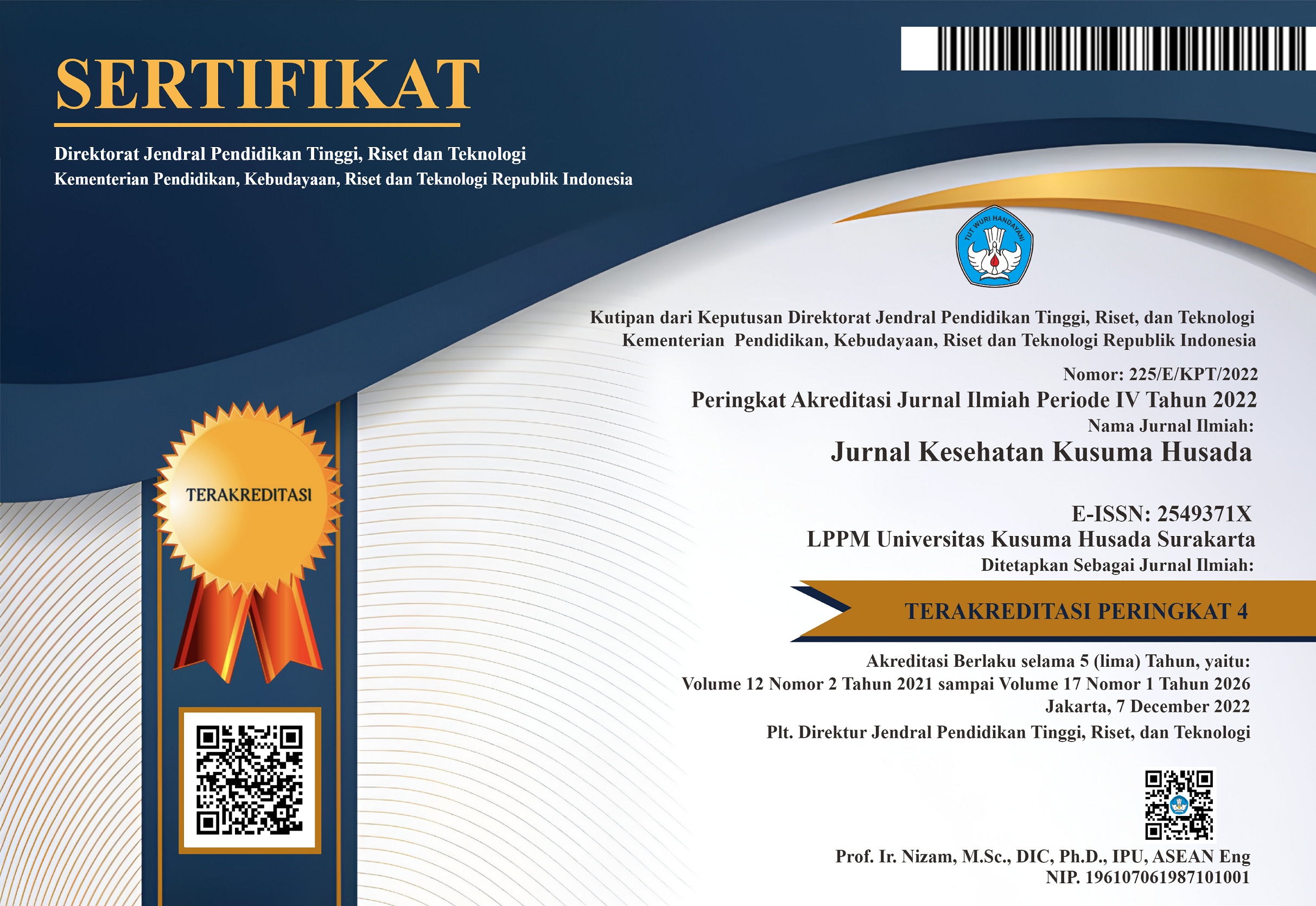PENGARUH KOMPRES HANGAT DI PERUT TERHADAP WAKTU FLATUS PASCABEDAH ORTOPEDI DENGAN ANESTESI SPINAL
Abstract
ABSTRAK
Pemberian anestesi spinal pada pasien bedah merupakan pilihan yang digunakan karena bersifat
analgesic dan melemaskan otot dinding perut. Namun efek sampingnya melemaskan otot polos perut
yang dapat mengakibatkan peristaltik usus berhenti sehingga pasien tidak dapat mengalami flatus.
Padahal flatus merupakan sesuatu yang amat penting untuk kenyamanan pasien. Selama ini tindakan
keperawatan pascabedah untuk mempercepat flatus masih terbatas pada mobilisasi semata. Penelitian
ini untuk mengetahui pengaruh pemberian kompres hangat terhadap perut waktu flatus pada pasien
pascabedah ortopedi dengan anestesi spinal. Penelitian menggunakan jenis quasi eksperimen dengan
posttest only control group design. Analisis data menggunakan uji t dengan membandingkan 2 kelompok
sampel. Penelitian dilakukan di RS Ortopedi Prof Dr. Suharso Surakarta dengan jumlah sampel
sebanyak 30 orang. Hasil penelitian menunjukkan setelah diberi intervensi kompres hangat di perut
sisi kiri dan kanan secara bergantian nilai mean kelompok eksperimen lebih kecil daripada kelompok
control. Hasil uji t 2,709 dan P < 0,05. Kesimpulan penelitian adanya perbedaan waktu flatus pada
responden pascabedah ortopedi dengan anestesi spinal yang diberi kompres hangat di perut dengan
responden yang tidak diberi kompres hangat.
Kata kunci: kompres hangat, flatus, anestesi spinal
ABSTRACT
Spinal anesthesia in surgical patients is an option that is used because it is analgesic and relaxes
the muscles of the abdominal wall. But the side effects which relax smooth muscle belly can lead to
intestinal peristalsis stops so that the patient can not undergo flatus. Though flatus is something very
important for patient comfort. During this time nursing actions to accelerate postoperative flatus is
still limited to mobilization alone. This study was to determine the effect of warm compresses to the
belly flatus time in postoperative orthopedic patients with spinal anesthesia. Research using this type of
quasi-experimental with posttest only control group design. The analysis of the data using the t test to
compare the two groups of samples. Research conducted at the Orthopaedic Hospital Prof. Dr. Suharso
Surakarta with a sample size of 30 people. The results showed seterlah by intervening warm compresses
on the abdomen left and right sides alternately mean value of the experimental group was smaller
than the control group. 2.709 t-test, and P <0.05. Conclusion of the time difference in respondents
postoperative orthopedic flatus with spinal anesthesia were given a warm compress on the stomach with
the respondents who were not given a warm compress.
Keywords: warm compresses, flatus, anestesi spinal
The copyright of the published articles belongs to Jurnal Kesehatan Kusuma Husada.

This work is licensed under a Creative Commons Attribution 4.0 International License.













